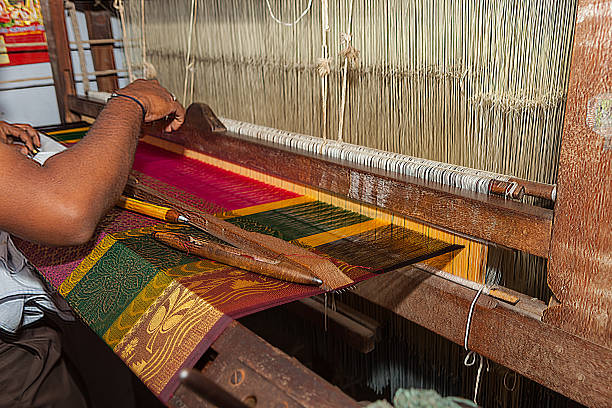A team from the renowned National Institute of Fashion Technology (NIFT) recently visited Dhapewada village in Maharashtra’s Nagpur district to help revitalize the region’s centuries-old weaving tradition, particularly the craft of creating ‘patti kinar’ sarees.
As per a media report, Professor Sandeep Kidile from the NIFT Mumbai team said that these sarees, crafted from a single cotton yarn, stand as a true testament to the exceptional craftsmanship of Maharashtra.
He explained, “These sarees are characterized by intricate butis made using the extra weft technique, enabling weavers to create detailed patterns and motifs. Each saree is 6.5 meters long and has a 3-inch plain border, presenting a simple yet elegant design. This craft has been handed down through generations, preserving the weaving heritage of Vidarbha. However, with the growing prevalence of machine-made textiles, the demand for these sarees has significantly decreased.”
Kidile added that the tradition is now at risk, with the livelihoods of artisans under threat. Many cooperative societies that once thrived are now struggling to maintain production.
The NIFT professor emphasized that the younger generation, grappling with financial instability and limited opportunities, is drifting away from the craft. He stressed that intervention is crucial to prevent this invaluable heritage from fading into obscurity.
“We visited Dhapewada village in Saoner Taluka of Nagpur district. We connected with artisans, gaining deeper insight into their challenges and aspirations. We want to ensure Dhapewada’s weaving legacy continues. We aim to create a future where tradition and modernity coexist, securing a place for patti kinar sarees in the evolving world of fashion,” he said.
Kidile mentioned that as part of these efforts, young artisans will be trained, contemporary designs will be incorporated, and digital platforms will be utilized to help the product reach a broader market. He also shared that his team is working to collaborate with the Maharashtra State Handloom Corporation Limited and the Union government’s Weavers’ Service Centre for product development.
Kidile remarked, “Strengthening the handloom sector will empower weavers financially, while also fostering local employment and boosting tourism. Preserving this craft is not merely about saving fabric—it’s about honoring the history, culture, and the artisans who keep this tradition alive.”
👉 Click here to read the latest Gujarat news on TheLiveAhmedabad.com



